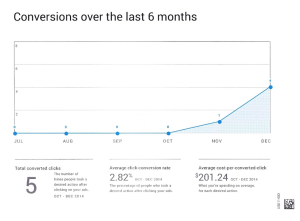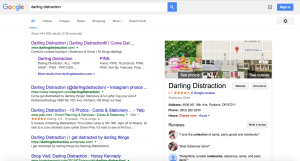1 Delivery = 1 Conversion
Even in some cases, a business will consider an abandoned shopping cart a conversion because they got their customer that far into the buying process.
It is important to note that most local business owner’s conversions happen by phone. The customer is influenced via online means (a website, a local listing, a review, a photo, a video, a social media post, etc.). None of these ways can be measured as a conversion. If your conversion happens offline, like phone calls, then they will not be measured. So the conversion cost that Google is showing you is skewed because it is not measuring all of your data.

The dollar figure that you are seeing only represents emails and form submissions that come from your website. How many emails do you get from your website each month? How many form submissions do you get from your website each month? That percentage is the only thing that Google is measuring. They are applying your entire advertising budget to just those two conversions. So as you can see, this figure is more than 50% incorrect… it is not even close to the number. In many cases, I have seen a number as much as 98% wrong.

($201.24 is NOT the actual cost per converted click)
When you are measuring Google conversions or reading their reports, it is important that you place the proper value of Google’s metrics.
The metrics that ARE important for you are
- Impressions
- Clicks
- Time on Site
- Number of Pages Visited
- Click-to-Calls
- Bounce Rate
Google Conversions are vital to measuring your online browsing to item delivery statistics. They show you exactly who your customer is.
Be sure to read Google Conversions Part Two . We will be discussing cross device measuring.





Write a Comment